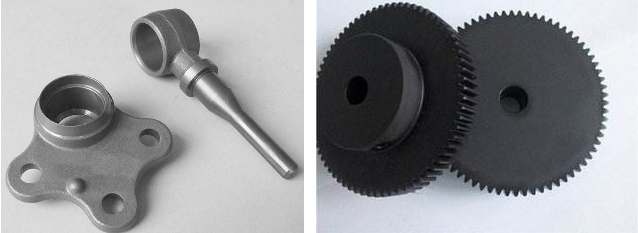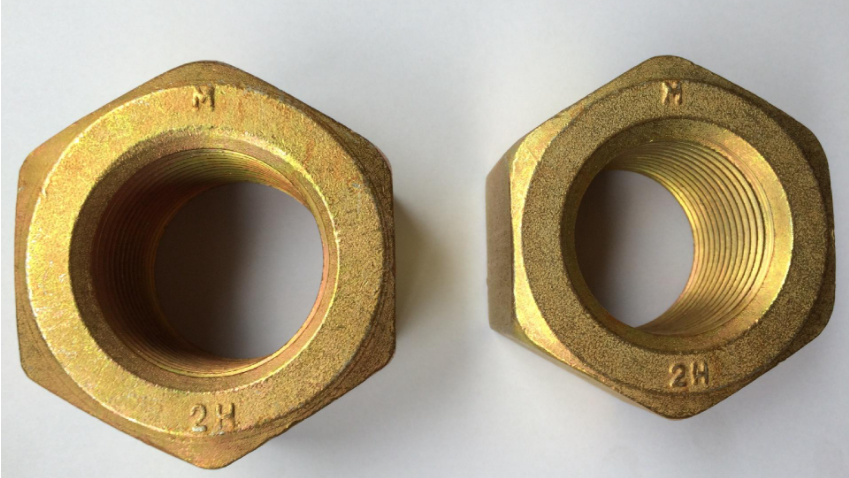
Privacy statement: Your privacy is very important to Us. Our company promises not to disclose your personal information to any external company with out your explicit permission.
First of all, let's look at blackening and phosphating with the worst anti-corrosion effect. Both of them have a characteristic, that is, the surface needs to be oiled after treatment. And this oil is also very important. Without oil, it will rust very quickly.

Blackening and phosphating are widely used due to their low price. Among them, the blackening neutral salt spray test can only reach 3 to 5 hours. The phosphating can reach 10-20 hours, if it is matched with advanced anti-rust oil, it can reach 72-96 hours. But the price of this oil is not cheap (2 to 3 times that of ordinary phosphating oil).
Then you may ask, what does the number of hours in this neutral salt spray test represent? We know that the salt spray test is an environmental test that uses the artificial simulated salt spray environmental conditions created by the salt spray test equipment to evaluate the corrosion resistance of products or metal materials. Compared with the natural environment, the salt concentration of chloride in the salt spray environment can be several times or dozens of times that of the general natural environment salt spray content, which greatly increases the corrosion rate. Also greatly shortened. Remember that 24h of a general neutral salt spray test can basically correspond to 1 year in the natural environment.
The phosphating mentioned above has many subdivisions according to the different phosphating solutions, such as the common zinc phosphating and manganese phosphating. Manganese-based phosphating is generally used for wear-resistant and lubricating treatment. Its structure is spherical particle crystal, and the film layer is very dense, so the anti-rust effect is also the best among all phosphating, but its adhesion is not very good for coating. Well, it is rarely used for pre-coating treatment, the hardness of the film layer is high, and extrusion treatment is not suitable. Zinc-based phosphating can also be used for anti-rust treatment. Its structure is mainly needle-like, flake-like or snowflake-like. There is a big difference. Generally, zinc-based phosphating is used for pre-coating treatment, rust prevention, and cold extrusion drawing.

Next, let's take a look at all kinds of galvanizing, including hot-dip galvanizing, electro-galvanizing, galvanizing, and Dacromet.
Electrogalvanizing is probably the most familiar to everyone. On the one hand, the price is cheap, and on the other hand, the surface of the parts after galvanizing looks good. But its anti-corrosion performance is also average, but it is much better than phosphating blackening. Generally, the neutral salt spray test of electro-galvanizing can be carried out within 72 hours, and the use of special sealing agent (expensive, 5-8 times that of ordinary galvanizing) can make the neutral salt spray test reach more than 200 hours. There is a problem with galvanizing. It is estimated that everyone knows that it is hydrogen embrittlement. Therefore, high-strength components (such as bolts above grade 10.9) are rarely galvanized. Although the hydrogen can be removed by an oven later, the cost is also high. . General manufacturers are reluctant to do so. Then you may ask, how to deal with high-strength connecting parts, if you want to be cheap, you can use phosphating, and if you want to be advanced, you can use the Dacromet mentioned later.

Different from the previous galvanizing through electrode reaction, hot-dip galvanizing involves immersing raw materials in a zinc pot for galvanizing, which is an intermetallic reaction and a physical reaction. Therefore, the name is more appropriate for hot dip galvanizing. When hot-dip galvanizing, the surface of the raw material is a layer of intermetallic compounds, followed by zinc, while the surface of electro-galvanizing is zinc, and there is no intermediate layer. Usually, the electro-galvanized zinc layer is thinner, the hot-dip galvanized zinc layer is thicker, and the corrosion resistance of hot-dip galvanized is relatively good. However, its coating thickness is not easy to control, and there are serious contaminations during processing, including zinc waste and zinc vapor. With the improvement of environmental protection requirements, the use of hot-dip galvanizing has become more and more limited.
When you hear "infiltration", you may understand the principle, which is similar to the carburization of gears. The invention belongs to a thermal diffusion surface strengthening technology, which is a chemical heat treatment process for preparing a Zn-Fe alloy protective layer by diffusing zinc elements into the surface of steel components under heating. Powder zinc coating can effectively improve and improve the corrosion resistance, surface oxidation resistance and wear resistance of steel components. The coating thickness is uniform, and the bonding strength and corrosion resistance with the substrate are the best among various zinc coatings (electrogalvanized, hot-dip galvanized, Dacromet), and the processing process is pollution-free and environmentally friendly.
Dacromet is the transliteration and abbreviation of DACROMET. This technology is a new generation of clean production technology that replaces electro-galvanizing and hot-dip galvanizing in the world today. Its coating has excellent corrosion resistance, less pollution, no pickling, no rinsing, No hydrogen embrittlement, strong weather resistance, suitable for a variety of metal substrates and other advantages. It adopts the principle of electroplating and is constructed by painting. The corrosion resistance of dacromet is much stronger than that of electroplating. Under the standard salt spray test, the dacromet coating consumes 1μm every 100h, while the coating consumes 1μm every 10h during electro-galvanizing, so dacromet consumes 1μm every 10h. The corrosion resistance of Luo coating is 7 to 10 times that of electroplating under the same coating thickness.

Since there is galvanized, some other rare metals should also be anti-corrosion, yes, so there are various surface anti-corrosion methods such as cadmium plating, Luo plating, and nickel plating. Let's take a look at them one by one.
The corrosion resistance of cadmium coatings is very good, especially in marine atmospheric environments, and the corrosion resistance is superior to other surface treatments. The waste liquid treatment process in the process of electroplating cadmium is expensive and expensive, and its price is about 15-20 times that of electroplating. Therefore, it is not used in general industries, and is only used in some specific environments. For example, fasteners for oil rigs and HNA aircraft.

The chrome layer is very stable in the atmosphere, not easy to change color and tarnish, high hardness and good wear resistance. Chrome plating on fasteners is often used as a decorative feature. It is rarely used in industrial fields that require high corrosion resistance, because good chrome-plated fasteners are as expensive as stainless steel, and chrome-plated parts are only used when the strength of stainless steel is insufficient. To prevent corrosion, copper and nickel should be plated before chrome plating. The chrome coating can withstand high temperatures of 650°C. But it also suffers from the same problem of hydrogen embrittlement as electrogalvanizing.
The method of plating a layer of nickel on metal or some non-metal by electrolytic or chemical method is called nickel plating. Nickel plating is divided into electroplating nickel and electroless nickel plating. Mainly used in places requiring both anti-corrosion and good electrical conductivity. Such as the lead terminal of the car battery.
Share from iMechanics Machinery

Privacy statement: Your privacy is very important to Us. Our company promises not to disclose your personal information to any external company with out your explicit permission.

Fill in more information so that we can get in touch with you faster
Privacy statement: Your privacy is very important to Us. Our company promises not to disclose your personal information to any external company with out your explicit permission.